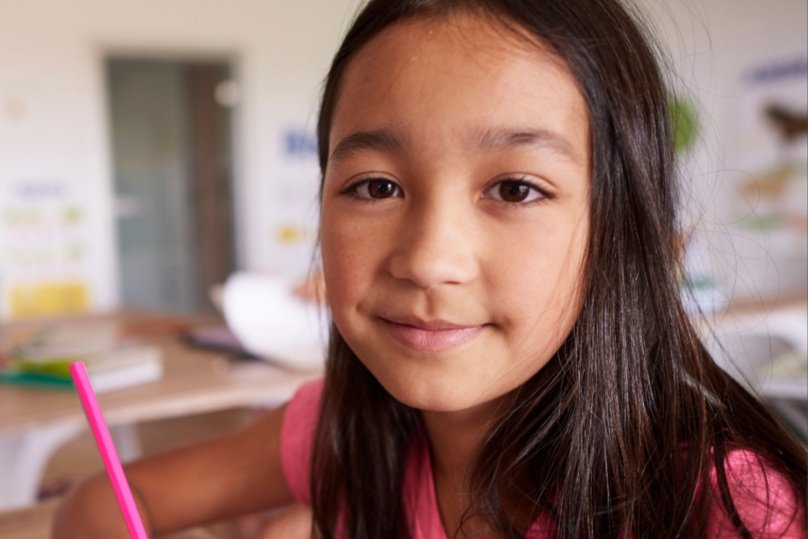
Breaking Barriers: Empowering Migrant Youth for Inclusive Education in Mexico
Client: UNICEF México
Pillar: Social and Gender Inclusion
Thematic Area: Migration
Services Provided: SBCC Strategy Implementation
Project Context
The “Inclusive Education for migrant children and adolescents” project was a collaborative effort between UNICEF, the German Agency for International Cooperation (GIZ), the Mexican Agency for International Cooperation (AMEXCID), and the Secretariat of Public Education (SEP). The project aimed to address the challenge of limited access to education for migrant children and adolescents in Mexico. It focused on priority states, namely Baja California, Puebla, Chiapas, and Chihuahua, where the need for inclusive education was particularly high.
The Challenge
There are several challenges that MAGENTA faced in the development of this project:
Lack of knowledge and awareness about public policy that ensures migrant children and adolescents’ right to education.
There is a present stigma and discrimination against migrant populations in Mexican host educational communities.
Migrant children, adolescents, and their caregivers have limited knowledge about Mexico’s legal framework regarding universal access to education.
To improve access to education by migrant children and adolescents in Mexico, MAGENTA implemented a social and behavioural change communications strategy aimed at promoting the active enrolment of migrant children and adolescents in school and promoting a more inclusive environment in the school communities.
The Objectives
To improve knowledge of the Normative of Access and School Control (a policy that states the responsibilities of educational staff to ensure equality and inclusion of all children regardless of their national origin).
Stimulate welcoming attitudes and practices towards migrant children and adolescents in local schools, especially among teachers and principals.
Sensitize migrant children and adolescents and their caregivers about education being mandatory and the importance of schooling.
Mobilize authorities and decision-makers in the Secretariat for Public Education (SEP, for the Spanish acronym) and public education secretariats from priority states towards the design and implementation of adapted public policy and budgets to the demand, with effective and coordinated implementation mechanisms.
The communications strategy was developed to address these behavioural insights:
There is a general stigma and taboo around migrant populations in host communities and schools
There is a general lack of awareness and knowledge about public policy in Mexico that ensures equal and inclusive education to all children, in two key populations:
Educational staff
Migrant parents and caregivers
What We Did
Visual design and material production: MAGENTA captured the strategy’s messaging through powerful visual storytelling. MAGENTA created a visual identity that represented migrant children and adolescents in a diverse, authentic way. The Monarch butterfly signified migration. The graphics, images, and videos developed for Facebook and Instagram represented diversity, and inclusion, and tackled stigma around the education of migrant children and adolescents.
Monitoring and Evaluation: MAGENTA implemented a robust monitoring and evaluation plan for the strategy, tracking key performance indicators such as reach, engagement, and interactions. We analyzed the data to assess the campaign’s effectiveness in conveying the message and supporting the educational inclusion of migrant children and adolescents. The KPIs provided insights into the campaign’s visibility, audience engagement, and level of interest, enabling MAGENTA to make data-driven decisions to optimize its strategies and achieve greater impact.
Components of the strategy
Impact
The impact of the strategy was rooted in the behaviourally—informed, participatory approach of the strategy. Positive behaviour change regarding awareness of migrant children and adolescents’ right to access to education and inclusive communities was achieved.
Results:
80.1% (252,543) of the reached audience identify as women and 19.9% (140,415) identify as men.
Audience Reach: 907,018 were reached by the strategy through social media boosting, increasing knowledge of migrant children and adolescent’s right to education.
Audiences: Most successful materials were segmented videos for the public, indicating interest in the inclusion of migrant children and adolescents into Mexico’s educational system.
Social media boosting: The Ghost Ads strategy was successful, but limited reach due to a lack of organic posts from UNICEF on the Move’s channels.
Out reach of materials by type of material:
Videos: 259,863
Infographics: 326,812
Posters: 209,731


